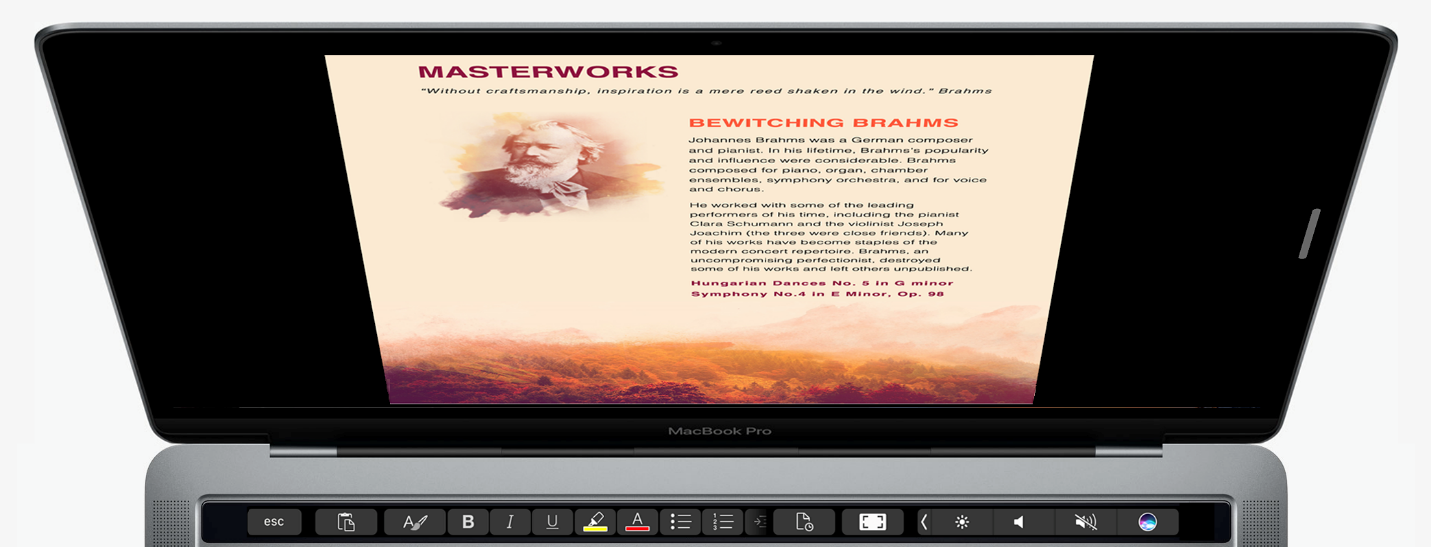Microsoft: No Date For Mac
Microsoft has officially released Visual Studio for Mac following an extended preview period for developers. The release corresponds with the kick off of Microsoft’s Build 2017 developer. 'Support for Office for Mac 2008 will end April 9, 2013,' Microsoft's Mac Business Unit (MacBU), the firm's OS X development arm, said in a post on the team's blog Thursday.

It doesn’t matter that you don’t think Microsoft Word doesn’t matter anymore. It does—for tens, hundreds, thousands of people, Microsoft Word is an every day event. An indispensable tool for getting daily business done.
And without it, whether you like it or not, much of what must get done in the world of words wouldn’t, if it weren’t for Word. What matters most to those users is how it works. Whether it works well. Whether it will get the job done without getting in the way. What matters to the hundreds of thousands of people who’ve traded up from a PC to a Mac and the tens of thousands of IT professionals who have to support them is whether or not Word on the Mac works in the world they work in. Is it invisible.
With few exceptions, is exactly that. Word for Windows and Mac now look substantially the same, although you may find that not all of the Windows’ features are available on your Mac. As a word processing tool, Word 2016—which, at present, is only available as part of an Office 365 subscription—hasn’t changed much since its last major release as. (Students, parents, and teachers may be able to get Office for free or cheap.
Check out ) How you create, edit, and style text remains the same as it ever was. What you may notice is that Word now supports some Mac OS-only features such as full screen mode, multi-touch gestures, and retina graphics. Microsoft has also added some Mac-only features of its own, including a Smart Lookup feature that integrates Bing searches and other contextually relevant information from the web when you use the tool on selected text. All of the Office products also include something that Microsoft now refers to as the Task Pane, which, for my money, is an awful lot like Office’s old Floating Palettes, without the floating. In short, the Task Pane provides an easy way for you to make quick formatting changes to text and other document elements without having to rely on a menu or Ribbon element. Need a little more detail on that word or concept?
Word’s Smart Lookup pulls in more details from the Web. Over the past several years Microsoft has undertaken a massive redesign of its Office products for Mac and iOS. These updates have streamlined the look and feel of Office apps, making them more like their Windows versions, but with what I find to be a far less cluttered look and feel. In fact, the new Mac version is as clean as Word on the iPad, which is an excellent app, and it also has some of the same limitations. The upside to this sameness is that, whether you’re working on a PC at your office, your iPad on the train, or your Mac at home, you’ll find the tools you need in substantially the same places. A simple click on the current editing tab hides the Ribbon and gives you more room for words.
While there is an essential “sameness” to all these apps, you will still find that some features found in the Windows version are nowhere to be found on the Mac. For example, the option to add a pop-up calendar to a table—a feature you’ll find in the Windows version—isn’t available on the Mac. But.if you use your Mac to add a properly formatted date to a document with a table including that feature, the field will retain the calendar option when you open it again on a PC. This raises an important point: Word for Mac is top-notch when it comes to collaborative work.
This is obvious when it comes to basic document editing. Email a document to someone, have them make changes, and send it back to you. If they’re using the current version of Word on the device they edit with, the transition is seamless. But, better yet, share your document using, or a, and you can have dozens of people working on the same document at the same time, each without interfering with the other’s changes. Word’s collaborative tools also include threaded comments, so you can see and interact with others within the comments on a document. Word 2016 offers excellent collaboration features with tools for resolving conflicts for edits in the same part of a document. Word 2016 isn’t without disappointments, but they are by no means deal killers.
Word takes no advantage of Apple’s Autosave and Versions features. So you’re stuck with what now seems like a vestige of some ancient past. Have a power failure? Dog step on your power strip? You’re relegated to the weeping and gnashing of teeth you no longer expect when bad things happen and you have unsaved changes in a document. This also seems to be tied to Word’s collaboration features, which, while excellent, are not as dynamic as I’d like them to be. If you’re editing a document while someone else is also making changes, you don’t see their changes until both they and you save the document.
(Compare this with Pages, which updates changes almost as soon as they’re made, no matter who is editing the document.) Finally, Word doesn’t support Yosemite’s option to rename and/or move a document using the menu in the document’s title bar. Word 2016 doesn’t support Yosemite’s Autosave features, so you can forget about the power going out and your unsaved changes still being in your document. Bottom line Microsoft Word 2016 is an excellent update to what is, for most users, an important business tool. Changes to the program’s user interface make it easy for anyone to bounce from Word on a Mac to Word on any other platform with a minimal transitional curve. Word’s collaboration features make it possible for business users to work on the computing platform of their choosing without making significant sacrifices. While the program doesn’t support some of Yosemite’s more important, user friendly, and bacon-saving features—such as Autosave—the overall user experience is superb.
In short, Microsoft Word gets the job done without getting in the way, If Word is your primary tool for getting work done with words, run, don’t walk to upgrade to Word 2016.
Update history for Office for Mac. 5 minutes to read. Contributors. In this article Office for Mac that comes with an Office 365 subscription is updated on a regular basis to provide new features, security updates, and non-security updates. The following information is primarily intended for IT professionals that are deploying Office for Mac to the users in their organizations. The following table summarizes information about the most current version of Office for Mac. Current version Release date Download link More information 16.19 (18110915) November 13, 2018.

Note. For security reason, Microsoft has deprecated the use of SHA-1.

Starting with the 16.17 release in September 2018, this information also applies to Office 2019 for Mac, which is a version of Office for Mac that’s available as a one-time purchase from a retail store or through a volume licensing agreement. The update history information for version 16.16 and earlier also applies to Office 2016 for Mac, which is also a version of Office for Mac that’s available as a one-time purchase. Older versions up to and including 16.16 can be activated with an Office 2016 for Mac volume license. You can’t activate version 16.17 or later with an Office 2016 for Mac volume license. For information about Office 2016 for Mac releases from September onward, see. For information about the features, security updates, and non-security updates that are included in a given release of Office for Mac, see.
If you want early access to new releases, join the program. Most current packages for Office for Mac The following table lists the most current packages for Office for Mac and for the individual applications, such as Word and Excel. All packages are 64-bit only.
Microsoft: No Date For Mac Download
The build date is listed in parentheses, in a YYMMDD format, after the version number. The install package is used if you don't have the application already installed, while the update package is used to update an existing installation. Note Download links are only provided for the most recent releases.